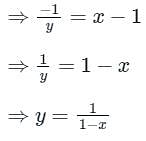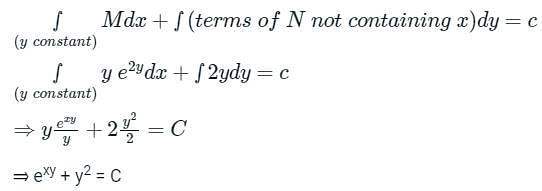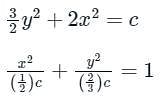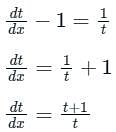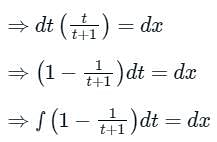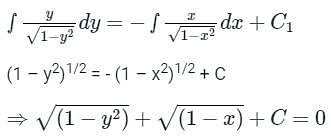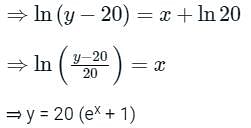Civil Engineering (CE) Exam > Civil Engineering (CE) Tests > Engineering Mathematics > Test: Method of Separation of Variables - Civil Engineering (CE) MCQ
Test: Method of Separation of Variables - Civil Engineering (CE) MCQ
Test Description
10 Questions MCQ Test Engineering Mathematics - Test: Method of Separation of Variables
Test: Method of Separation of Variables for Civil Engineering (CE) 2025 is part of Engineering Mathematics preparation. The Test: Method of Separation of Variables questions and answers have been
prepared according to the Civil Engineering (CE) exam syllabus.The Test: Method of Separation of Variables MCQs are made for Civil Engineering (CE) 2025 Exam. Find important
definitions, questions, notes, meanings, examples, exercises, MCQs and online tests for Test: Method of Separation of Variables below.
Solutions of Test: Method of Separation of Variables questions in English are available as part of our Engineering Mathematics for Civil Engineering (CE) & Test: Method of Separation of Variables solutions in
Hindi for Engineering Mathematics course. Download more important topics, notes, lectures and mock
test series for Civil Engineering (CE) Exam by signing up for free. Attempt Test: Method of Separation of Variables | 10 questions in 30 minutes | Mock test for Civil Engineering (CE) preparation | Free important questions MCQ to study Engineering Mathematics for Civil Engineering (CE) Exam | Download free PDF with solutions
Test: Method of Separation of Variables - Question 1
The solution of dy/dx = y2 with initial value y(0) = 1 is bounded in the interval
Detailed Solution for Test: Method of Separation of Variables - Question 1
Test: Method of Separation of Variables - Question 2
Solve the following equation:
yexydx + (xexy + 2y)dy = 0
yexydx + (xexy + 2y)dy = 0
Detailed Solution for Test: Method of Separation of Variables - Question 2
Test: Method of Separation of Variables - Question 3
Consider the differential equation The general solution with constant C is
The general solution with constant C is
 The general solution with constant C is
The general solution with constant C is
Detailed Solution for Test: Method of Separation of Variables - Question 3
Test: Method of Separation of Variables - Question 4
The solutions of the equation 3yy’ + 4x = 0 represents a:
Detailed Solution for Test: Method of Separation of Variables - Question 4
Test: Method of Separation of Variables - Question 5
The solution of differential equation dx – (x + y + 1) dy = 0 is
Detailed Solution for Test: Method of Separation of Variables - Question 5
Test: Method of Separation of Variables - Question 6
The solution of the differential equation (dy/dx) = ky, y(0) = c is
Detailed Solution for Test: Method of Separation of Variables - Question 6
Detailed Solution for Test: Method of Separation of Variables - Question 7
Test: Method of Separation of Variables - Question 8
What is the solution of the differential equation dy/dx = x/y, with the initial condition, x = 0, y = 1?
Detailed Solution for Test: Method of Separation of Variables - Question 8
*Answer can only contain numeric values
Test: Method of Separation of Variables - Question 9
Given  the value of y at x = 2 is ________ (round off to nearest integer) (Important - Enter only the numerical value in the answer)
the value of y at x = 2 is ________ (round off to nearest integer) (Important - Enter only the numerical value in the answer)
Detailed Solution for Test: Method of Separation of Variables - Question 9
Test: Method of Separation of Variables - Question 10
Which of the following equations cannot be solved by using the method of separation of variables?
Detailed Solution for Test: Method of Separation of Variables - Question 10
|
65 videos|120 docs|94 tests
|
Information about Test: Method of Separation of Variables Page
In this test you can find the Exam questions for Test: Method of Separation of Variables solved & explained in the simplest way possible.
Besides giving Questions and answers for Test: Method of Separation of Variables, EduRev gives you an ample number of Online tests for practice




